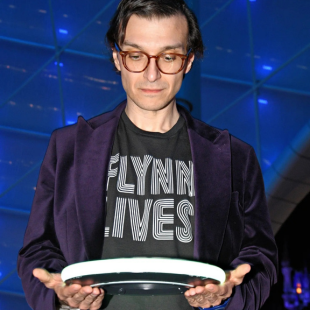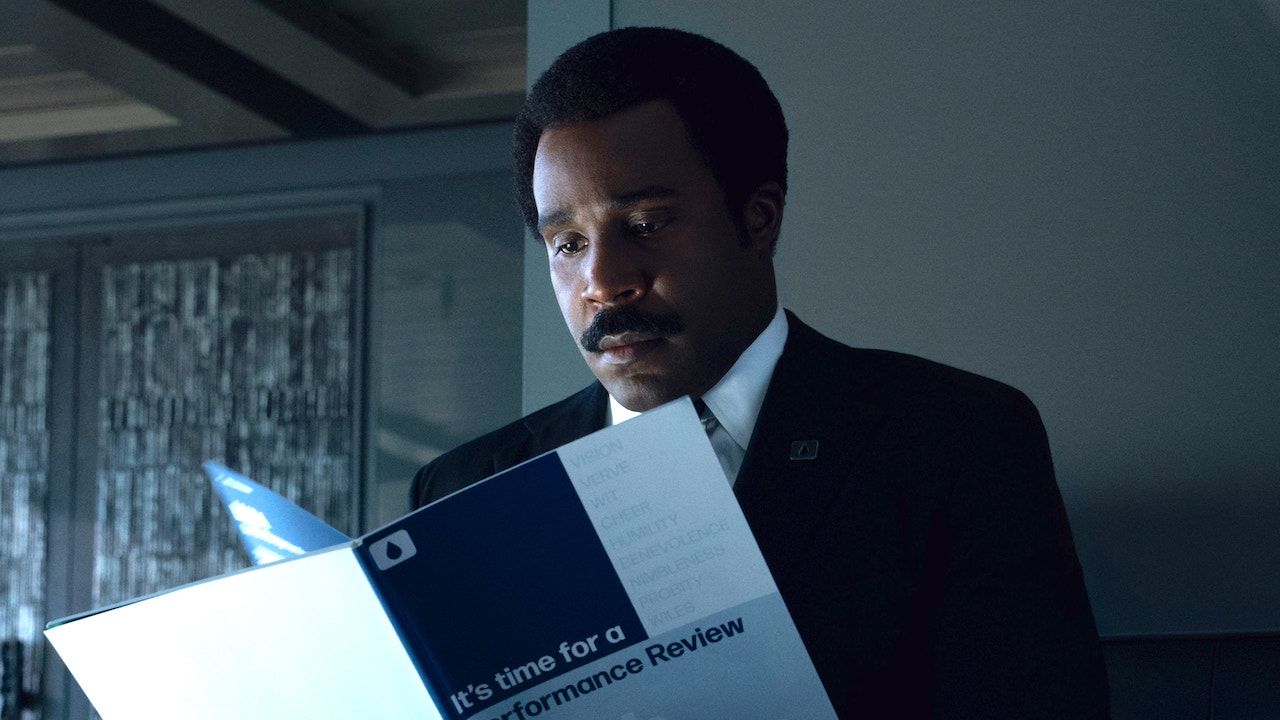To 3D Or Not To 3D: Buy The Right Avatar: The Way Of Water Ticket
Does Pandora still shine as a crown jewel of 3D glory?
James Cameron kickstarted the world of 3D filmmaking and exhibition with his work on 2009’s Avatar. For years after that seismic blockbuster’s release, the craze of converting and filming movies with third-dimensional enhancement became quite the regular occurrence.
Without Avatar, we would not only be without The Way of Water, but we wouldn’t be asking our favorite and frequent question: To 3D or Not To 3D? We’re returning to the saga that started it all, as Avatar: The Way of Water could potentially spark another 3D revolution in theaters.
If you want to read CinemaBlend’s official review of James Cameron’s grand return, that information is available elsewhere. Here and now, it’s time to see if Avatar 2 can revitalize the 3D market or if this premium format is dead in the water.
FIT SCORE - 5/5
Could you even imagine having an Avatar movie that didn’t show in some sort of 3D format? It’d be as crazy as thinking the RDA wouldn’t return to Pandora for some payback in a long-awaited sequel. Times may have changed, but this franchise’s fit in the format that it helped boost into mass relevance has not dimmed one bit.
Avatar: The Way of Water is a natural match for 3D thrills, and the movie plays spectacularly in this format. As James Cameron doesn’t see this technology as a frivolous cash grab, he maximizes the bang for the buck with every frame. There are still some hiccups here and there in the quest to push the envelope, but this movie totally belongs in the 3D space.
PLANNING & EFFORT - 4/5
A rarity in the 3D space nowadays, James Cameron shot Avatar: The Way of Water in native 3D, and at 48 frames per second. If you thought movies with a third-dimensional overhaul were controversial, then adding High Framerate scenes into the mix are going to make for some rather interesting conversations.
It should also be noted that “select 3D conversion” was done by SDFX Studios, the firm formerly known as Stereo-D. For the most part, the new bells and whistles don’t hinder Cameron’s vision. That said, there’s some glaring issues that rob what should have been a perfect score.
Your Daily Blend of Entertainment News
Thankfully, the Brightness issue only seems to be an issue that depends on which 3D format you see Avatar 2 in. However, the HFR sequences are the major problem with this sequel’s premium presentation, as the “motion smoothing” look that sets certain sequences of fast-moving action apart is noticeable and disrupts the natural flow of the movie.
BEFORE THE WINDOW - 5/5
How much of a rarity is Avatar: The Way of Water? I was able to see this film in not one, but two different 3D screenings. Observing the film in both Dolby 3D and IMAX 3D, I was able to take in the major premium formats that will be offering you those thrills behind the tinted glasses on opening day. As such, the scores you read will be for the Dolby 3D experience, though there’s one field where I’ll be including a special note for the IMAX 3D version.
For the most part, the only difference is the size of the screen that IMAX offers, as the 3D is 90% similar between the formats. So you won’t miss out on the awesome Before the Window thrills that Avatar’s sequel offers. Nailing down the basics, you get your fair share of weapons and creatures poking out of the screen, just as you’d expect from any third-dimensional presentation of this caliber.
What really sets Avatar: The Way of Water apart from most 3D is that the Before the Window effect isn’t limited to just the usual suspects. Lighting effects are also heightened to great effect, with beams of light and tracer bullets shooting towards the audience’s faces. Even targeting reticles on various weapons play around with what pops out, in addition to how well the depth of picture is drawn in any given image.
BEYOND THE WINDOW - 5/5
All hail Pandora, the deepest picture you’re going to get on the 3D market to date. Avatar: The Way of Water once again knocks the fundamentals out of the park, keeping its characters and environments clearly defined through keen spatial reasoning. However, this is a James Cameron movie, and Cameron prides the native 3D efforts taken by the directors who engage.
The depths of the picture in Avatar: The Way of Water are astonishing and dazzling, especially when the action takes place in underwater sequences. Something as simple as looking up to the surface from below the waves actually manages to have the desired effect and then some. You truly see the distance to the surface, and that’s only the beginning.
Atmospheric effects like embers, massive fire clouds and even computer displays all convey the depth needed to set up the environment you’re observing in expert clarity. With all of the beauty and wonder being explored in these new corners of Pandora, Avatar 2 isn’t skimping on the details on either side of the screen.
BRIGHTNESS SCORE - 5/5
To watch Avatar: The Way of Water in Dolby 3D was like taking that first sweet sip of cool water on a hot summer day. The picture, even with the glasses on, was totally crisp and bright throughout the entire movie. Night scenes, underwater sequences with bioluminescence, frames filled with smoke and fire… all were shown with the same beauty and clarity, and that bioluminescence was especially powerful.
Unfortunately, if you’re planning to see this movie in IMAX 3D, you should take at least one point off of the Brightness score. As always, this is a crucial field that depends on how well your local theater maintains its projectors between showings.
Keeping these factors in mind, in the IMAX screening I attended, the usual dimness was added by slipping on the glasses required to see Avatar’s latest chapter in all of its 3D glory. It didn’t kill the buzz, but it did negate the larger picture size of the “optimized for IMAX” experience.
GLASSES OFF SCORE - 5/5
Do you like to take your glasses off and look at the blurry pictures that 3D presentations use to create those (potentially) magnificent optical effects? Of course you do, and you’d be lying if you said you didn’t. Just as it has in the factors we’ve discussed so far in this To 3D or Not To 3D evaluation, Avatar: The Way of Water does some amazing things with its blurry field of manipulation.
Seeing double only covers a fraction of what you’ll see without your glasses, as some scenes show thick and fuzzy blur covering every inch of the screen. Some sequences still have those 2D touchstones that are required to anchor the rest of the thrills, and naturally a lot of those scenes happen to be shots that are more intimate in scope.
Even in those moments, a fine level of blur can be detected between those characters/objects and the heavier fields of blur. It’s almost as fun to spot as the 3D effects working their Avatar franchise magic.
AUDIENCE HEALTH - 3/5
It was almost perfect, my friends. I should have known when the Avatar re-release introduced the new visual language that James Cameron was using for The Way of Water to his 2009 origin story for Jake Sully. The introduction of High Framerate visuals is both an impressive step forward, as it shows promise when used right, but also provides this movie with its greatest stumbling block.
If anyone best understands the HFR game in the 3D space, it’s Ang Lee. Filming movies like Billy Lynn’s Long Halftime Walk and Gemini Man in 120 frames-per-second, he overcame the usual “soap opera effect” that gives movies in this format the motion smoothed look. Sadly, James Cameron only filmed Avatar 2 in 48 FPS, and the variety of speeds included in his finished film tops out at 60 FPS.
This variable FPS approach causes some visual confusion, as certain scenes on the higher end of the spectrum stick out like a cut scene in a video game. To provide a frame of reference, Cameron has run into the same problem as The Hobbit: An Unexpected Journey’s HFR 3D presentation had.
As a result, your eyes are going to wonk out a little more than usual keeping up with moments like Jake and Neytyri’s date night flight on Pandora. Though on the flip side, water-based scenes and effects look positively stunning in HFR, so there’s obviously a learning curve that needs to be navigated during future Avatar entries.
FINAL VERDICT: 32/35
Avatar: The Way of Water, faults and all, reintroduces the world to what 3D spectacle was supposed to represent in Hollywood filmmaking. While the expectations for the continued story of this franchise can be debated by movie fans, the sterling presentation of third-dimensional thrills and spills cannot be denied.
If it wasn’t for that damned High Framerate debacle, this would have been a perfect game. The fact that the risk was taken only makes the potential for the future that much stronger. But in the here and now, Avatar 2's execution of the bleeding edge of technology sees it swimming a bit too far, too fast.
Strangely enough, my score for Avatar: The Way of Water was only one point higher than the score CinemaBlend gave to Avatar’s 3D during its contemporary release. Though again, if you’re thinking of seeing this film in IMAX 3D, you’d be right on the same level as the first film’s fighting weight. With the advances in projecting technology, there are now more options than ever for 3D enjoyment. If you have a choice, my recommendation is to head straight to a Dolby 3D screening, and don’t look back.

Mike Reyes is the Senior Movie Contributor at CinemaBlend, though that title’s more of a guideline really. Passionate about entertainment since grade school, the movies have always held a special place in his life, which explains his current occupation. Mike graduated from Drew University with a Bachelor’s Degree in Political Science, but swore off of running for public office a long time ago. Mike's expertise ranges from James Bond to everything Alita, making for a brilliantly eclectic resume. He fights for the user.
